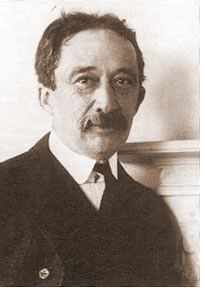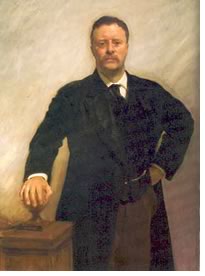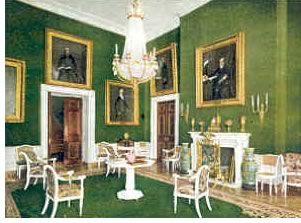
"The Roosevelt Restoration of 1902" White House History magazine
(number 11, Summer 2002)

Stephanie Stubbs, Assoc. AIA
Managing Editor
Before a thoughtful and considered review of White House History's "The Roosevelt Restoration of 1902" (number 11, Summer 2002) edition, please permit a moment of unbridled enthusiasm: This journal is AWESOMELY WAY COOL!
Okay, then. White House History, the journal of the White House Historical Association, has assembled a collage of six essays that collectively capture the many-faceted 1902 White House restoration, truly an architectural turning point not only for "America's House," but also for urban development of the nation's capital and ascendancy of The American Institute of Architects. From the first sentence of the foreword by William Bushong, historian and Web master of the White House Historical Society and guest editor for this volume, you will be hooked.
 "Through
[Charles J.] McKim, [AIA Secretary Glenn] Brown, and Cass Gilbert, Theodore
Roosevelt forged a bond with the American Institute of Architects that
established the organization as a de facto design arts advisory board
during his administration," Bushong writes. "This partnership
created a strong statement of national identity and culture in architecture,
decorative arts and city planning that culminated in shaping the future
character of the White House and civic arts in Washington, D.C."
(Can't you just feel the architectural power tingling in your toes?)
"Through
[Charles J.] McKim, [AIA Secretary Glenn] Brown, and Cass Gilbert, Theodore
Roosevelt forged a bond with the American Institute of Architects that
established the organization as a de facto design arts advisory board
during his administration," Bushong writes. "This partnership
created a strong statement of national identity and culture in architecture,
decorative arts and city planning that culminated in shaping the future
character of the White House and civic arts in Washington, D.C."
(Can't you just feel the architectural power tingling in your toes?)
Powerful personalities
Bushong builds on this topic through one of the essays that may prove
most interesting to most architects: "Glenn Brown, The White House,
and the Urban Renaissance of Washington, D.C." Bushong outlines the
extraordinary work of Brown, a well-known Washington architect and historian
(he wrote the two-volume The History
of the United States Capitol, 1900 and 1903) who served as secretary
(today we would call him CEO) of the AIA from 1898–1912. Though Brown
is said continually to have claimed credit for the AIA rather than for
himself, Bushong demonstrates how personally dedicated and powerfully
influential Brown was.
 The
power of the architects of that time met its match in the First Denizen
of the Executive Mansion, as editor of White
House History William Seale shows in his contribution, "Theodore
Roosevelt's White House." Seale has a way of bringing home the notion
this historic icon of a man had to house a family with six kids in 1902
as well as his executive workforce. Seale also clearly explains McKim's
thinking about the interior redesign, and how it brought an American icon
up to contemporary need: "[McKim] needed to honor the flow of thousands
of callers, who needed accommodation while remaining aware that they were
in a house of state," Seale writes. "On the other hand, he needed
to solve two other problems of the house: it could no longer accommodate
home and office entirely on the second floor." Those familiar with
Seale's seminal The White House: The
History of an American Idea (published in 1992, the White House's
bicentennial) will find equal delight in his easy prose and telling of
the tale; those not familiar with the book may find themselves wanting
to read it now. And it's a good thing that his words allow history to
live on. As Seale ends his essay: " Only in the East Room, itself
rebuilt, can you feel the thunder of TR's splendid appearance, as you
see Sargent's portrait of him at the old stair, reflected a hundred times
in the broad mirrors."
The
power of the architects of that time met its match in the First Denizen
of the Executive Mansion, as editor of White
House History William Seale shows in his contribution, "Theodore
Roosevelt's White House." Seale has a way of bringing home the notion
this historic icon of a man had to house a family with six kids in 1902
as well as his executive workforce. Seale also clearly explains McKim's
thinking about the interior redesign, and how it brought an American icon
up to contemporary need: "[McKim] needed to honor the flow of thousands
of callers, who needed accommodation while remaining aware that they were
in a house of state," Seale writes. "On the other hand, he needed
to solve two other problems of the house: it could no longer accommodate
home and office entirely on the second floor." Those familiar with
Seale's seminal The White House: The
History of an American Idea (published in 1992, the White House's
bicentennial) will find equal delight in his easy prose and telling of
the tale; those not familiar with the book may find themselves wanting
to read it now. And it's a good thing that his words allow history to
live on. As Seale ends his essay: " Only in the East Room, itself
rebuilt, can you feel the thunder of TR's splendid appearance, as you
see Sargent's portrait of him at the old stair, reflected a hundred times
in the broad mirrors."
From cityscape to
chandelier
At whatever scale your interest lies in the spectrum of architecture—from
urban planning to residential interiors—this collection of essays
will capture your fancy. "The White House in the Monumental City,"
by National Park Services historian Antoinette Lee, describes the White
House in 1902 as a turning point for the City of Washington. The restored
White House of 1902 stood on the dividing line between two distinct images
of the national capital city," Lee writes. "This first image
was of the city of the past . . . it was a city colored in rich hues of
red brick and brown stone. Second, and by contrast, it was the image of
a future city of the 20th century, finding its inspiration in the Great
White City of the 1883 World's Columbian Exposition in Chicago."
 At
the other end of the architecture scale, Betty Monkman's "White House
Collection: The Beaux Arts Furnishings of 1902" leads us through
the state rooms as designed by McKim with an eye to "refurnish the
interior of the building in harmony with its exterior architecture."
Monkman—White House curator and author of The
White House: Its Historic Furnishings and First Families—leads
us on a tour of the polish and splendor: Beaux Arts fabrics and sumptuous
chandeliers decorated the East, Green, Red, and Blue rooms. Slightly more
utilitarian, yet every bit as fascinating is Assistant White House Curator
Lydia Tederick's "The Executive Offices 100 Years Ago: A Photographic
Essay," which leads us through the 1902 new wing, now known of course
as "the West Wing," built to house the Executive Mansion's offices.
At
the other end of the architecture scale, Betty Monkman's "White House
Collection: The Beaux Arts Furnishings of 1902" leads us through
the state rooms as designed by McKim with an eye to "refurnish the
interior of the building in harmony with its exterior architecture."
Monkman—White House curator and author of The
White House: Its Historic Furnishings and First Families—leads
us on a tour of the polish and splendor: Beaux Arts fabrics and sumptuous
chandeliers decorated the East, Green, Red, and Blue rooms. Slightly more
utilitarian, yet every bit as fascinating is Assistant White House Curator
Lydia Tederick's "The Executive Offices 100 Years Ago: A Photographic
Essay," which leads us through the 1902 new wing, now known of course
as "the West Wing," built to house the Executive Mansion's offices.
 The
architects and the president
The
architects and the president
But I've saved my view of the best for last. It's an unwaveringly biased
opinion because I had the privilege of working with author Tony Wrenn,
Hon. AIA, for years when he served as archivist for the AIA. His point
of view and love of architectural history have shaped my own. Wrenn's
essay, "The 'Eye of Guardianship:' President Theodore Roosevelt and
the American Institute of Architects" artfully tells the story of
how AIA Secretary Glenn Brown, the national AIA component, and the AIA
Washington chapter, organized the Public Art League, a lobbying group
whose no small plans included torpedoing an Army Corps of Engineers proposal
to enlarge rather than restore the White House, as well as reinstituting
the principles of L'Enfant's plan for the city. The League's members included
McKim, Daniel Burnham, Augustus Saint-Gaudens, and Frederick Law Olmsted
Jr. Though a multiyear effort, the league lobbied to have the famous McMillan
Commission put in place and became the forerunner of today's powerful—well,
let's not ruin the end of the story! We can say, however, that "eye
of guardianship" over the White House was the legacy bequeathed to
the AIA by Roosevelt as he left office. It does make one proud to contribute
to this wonderful profession.
Finally, it is worth noting how well this series of essays pulls together—there is just enough overlap to reinforce the storylines, yet not so much to make the overall presentation tedious. The judicious use of photos and drawings offers a fine array of black-and-white and color images of people, construction, and finished product.
This issue of the journal (as well as subscriptions to the magazine) may be ordered on the White House Historical Society's Web site, for $4.95 plus shipping.
Copyright 2002 The American Institute of Architects. All rights reserved.
![]()
|
|
|